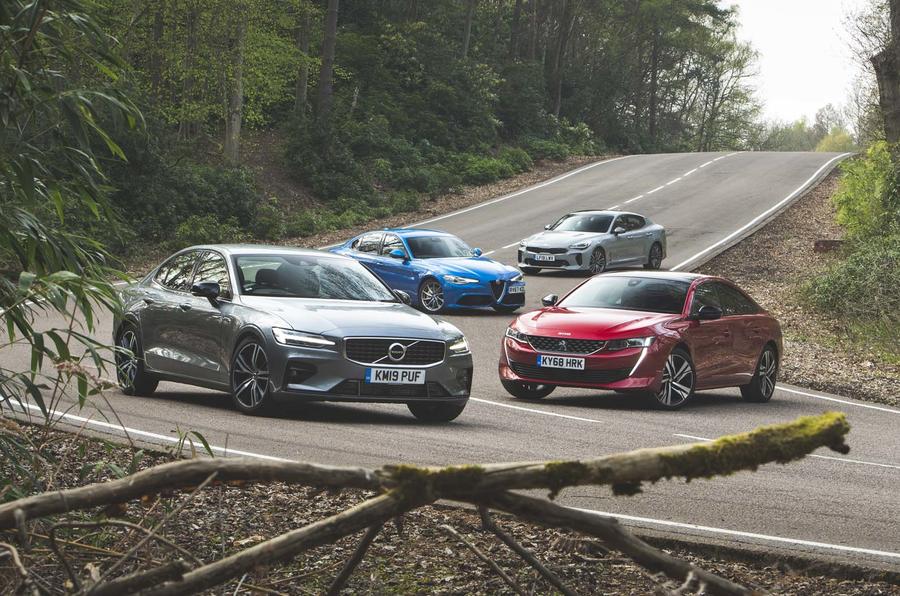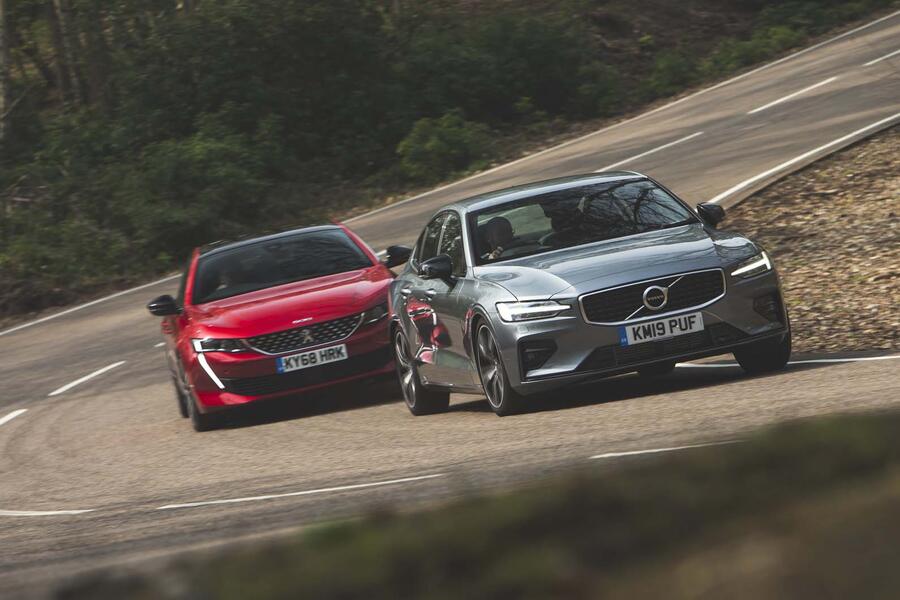This is a test for and of the unconventional. It’s for those who want something out of the ordinary. Something not an Audi, BMW or Mercedes-Benz. It is for those who think like a fleet manager does not.
There’s a new Volvo S60, see. Pretty, isn’t it? We could have put it against its prime German saloon rivals, and if we did, my guess is that it would finish second to the new 3 Series, because the BMW has a kind of poise that the Volvo does not. But to avoid that foregone conclusion, and because we wanted to do something more esoteric, we have assembled three rivals that all go about being large family saloons/hatchbacks in a slightly different way.

Which of our four is the most unusual is hard to call. Probably it’s the Kia Stinger. Not very long ago the idea of an executive Volvo being pitched against a Kia of the same class and price – the high £30,000s, like all the cars here – would have been unthinkable, but now, here we are. The rear-drive Stinger is a car I don’t think you’ll see many of, but it will change public perception.
The Stinger was developed, it seems obligatory to say, under the leadership of an engineer who used to head BMW’s M division, and it’s a car we like very much. Most of all we like it with a big V6 and a limited-slip differential, because we’re children, but, like the S60, this one comes with a 2.0-litre petrol engine. I told you this was a different sort of test.








































































Join the debate
Add your comment
Surprised the Mondea and
Surprised the Mondea and Insignia weren't included as they're more direct competitors for the Peugeot than say an Alfa or Stinger?
Buy the Alfa?
And remember the car for the excitement you felt when it went into the garage (yet again)?
teemacs wrote:
My Giulia has been perfectly reliable.
Buy the Alfa and be done with